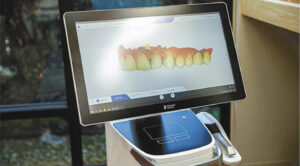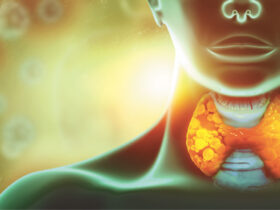By Dr. Amanda Rizner
 Digital dentistry has transformed the field of oral health in recent years, bringing numerous advancements that enhance both patient experience and clinical outcomes. This technological evolution has integrated digital tools and techniques into almost every aspect of dental care, improving precision, efficiency, and accessibility. Here’s a detailed look at some of the most significant advances in digital dentistry.
Digital dentistry has transformed the field of oral health in recent years, bringing numerous advancements that enhance both patient experience and clinical outcomes. This technological evolution has integrated digital tools and techniques into almost every aspect of dental care, improving precision, efficiency, and accessibility. Here’s a detailed look at some of the most significant advances in digital dentistry.
Digital Radiography
Digital radiography represents a significant advancement over traditional film-based X-rays. Digital sensors capture images of the teeth and surrounding structures with less radiation and in real-time. The radiation on most of the digital x-rays is so low, the ADA (American Dental Association) recently published a statement saying lead vests are no longer needed in order to capture these images, even on pregnant patients. The images are immediately available for review on a computer screen, allowing for quicker diagnosis and treatment planning. Digital radiographs can be enhanced, adjusted, and shared easily, improving communication with patients and other healthcare professionals. Additionally, the ability to store and access digital images electronically contributes to better record-keeping and continuity of care.
3D scans or “digital CT scans” are also a major advancement in dental technology. Dentists now use these scans in order to visualize the teeth, bone, and sinuses in the “third dimension.” This allows for a more accurate view of caries, infection, and bone loss which we were unable to determine with traditional x-rays. 3D scans have revolutionized how dentists treatment plan for implant placements and other surgeries, allowing for much high accuracy and predictability. This technology is also used while doing endodontics (root canal therapy) in order to accurately find and treat all the nerves in each tooth.
Digital Impressions
Traditional impressions that were used for years in dentistry involved messy, uncomfortable molds and were prone to numerous inaccuracies. This type of procedure was very time consuming for both the patient and dentist. Digital impressions, however, have revolutionized this process. Using intraoral scanners, dentists can now capture highly accurate, three-dimensional images of a patient’s teeth and gums quickly and comfortably. The entire scan of patient’s dentition usually takes less than two minutes. After a scan is taken, the patient’s file is easily emailed to a dental laboratory in seconds. This eliminates the need for physical molds which reduce the chance of errors, and improve the fit and function of restorations. Some of the intraoral scanners now have advanced technologies which can help the lab see the exact shade of the teeth or any changes or wear patterns of the dentition throughout time. The data collected can be used for a variety of purposes. Initially digital dentistry was used to help fabricate dental crowns which would fit more accurately and be fabricated in shorter time frame. This field has rapidly expanded throughout the years and now digital impressions can be used to fabricate orthodontic aligners, nightguards, denture and partials. This real life simulation produced by these scanners helps the patient better understand their oral health as they can visually see all aspects of their dentition up close.
3D Printing
3D printing is becoming popular as technology advances. It enables the production of highly customized dental appliances and models including orthodontic aligners, crowns, surgical guides, and prosthetics such as denture and partials. 3D printers use digital files from previously taken intraoral scans to create physical objects layer by layer, which allows for intricate designs and complex geometries that were previously difficult or impossible to achieve. This technology not only speeds up the manufacturing process but also enhances the customization and accuracy of dental devices. Most dental labs have printers and are currently using this technology. Some dentists are now offering 3D printing services directly from their office instead of having to send the files to a dental laboratory. This allows for restorations to be manufactured and delivered in the same day, offering a convenient service to the patient.
Conclusion
Digital radiographs, impressions and 3D printing have become very popular in dental offices throughout the world. These major advancements aim to improve accuracy in the dental profession as well as comfortability for the patient, making the trip to the dentist more enjoyable for years to come.
(941) 529-0055
www.dentistryonfruitville.com







